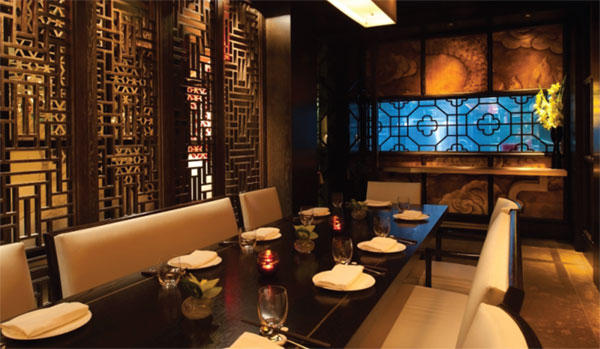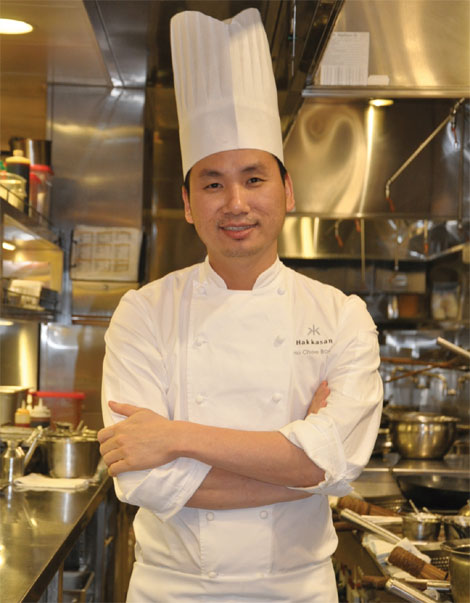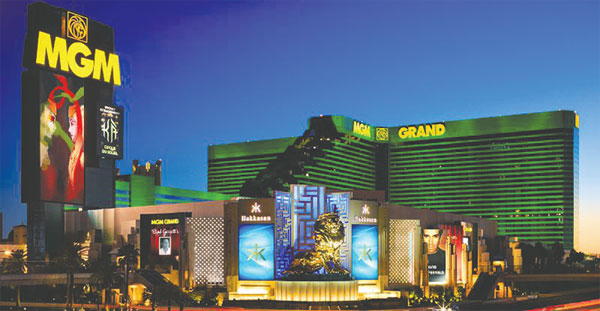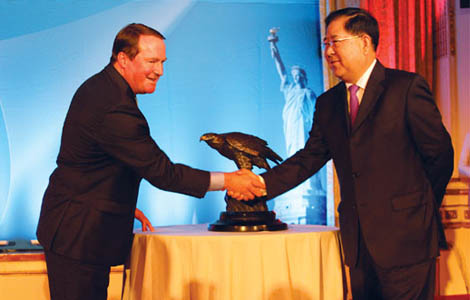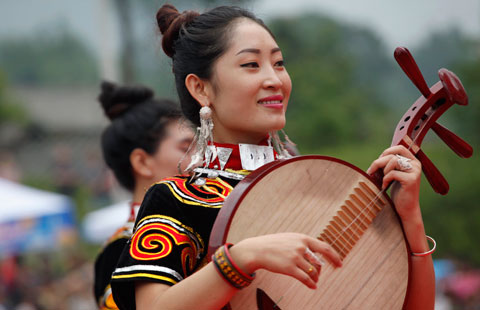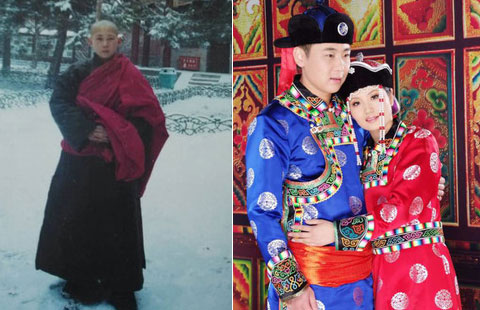Above and beyond high-end dining
Updated: 2014-08-08 11:49
By Zhang Yuwei (China Daily USA)
|
||||||||
At a Chinese restaurant off Times Square, a Malaysian-Chinese chef is taking his offerings to a whole new level in fine-dining, a goal of many Chinese restaurateurs these days, but only a few actually make it, reports ZHANG YUWEI from New York.
Walking through an 80-foot entranceway covered with Italian marble, chef Ho Chee Boon introduces his guests to New York's Hakkasan - an international restaurant chain that aims to offer a luxurious, fine-dining Chinese experience.
"It's after lunch hour so I have some time to myself," says Ho, Hakkasan's international executive chef, while he gives a tour of the kitchen.
|
Dining area of Hakkasan in New York which received one Michelin star six months after it was opened in 2012. Provided to China Daily |
|
Ho Chee Boon, born to a Chinese father, is Hakkasan's international executive chef. Zhang Yuwei / China Daily |
"I enjoy innovation in my work," says Ho as he shows some dim sum samples to his guests. "I want Western people to know that Chinese food - like other cuisines - can also be a quality experience."
The 11,000-square-foot outpost - costing some $10 million - is just a few blocks off Times Square. Covered by dimmed blue lights, the restaurant has a 60-foot-long bar on the side with the main dining area divided into small chambers separated by carved Chinese wood lattices. It carries a modern atmosphere of West and East.
About six months after the New York chain was opened in 2012, the Malaysian Chinese chef earned a Michelin star (out of three), the oldest and best-known European hotel and restaurant reference guide.
Ho, 41, was born to a Chinese father and Malaysian mother in Taiping, located in northern Perak, Malaysia. He started helping in local restaurants at the age of 13 and learned to make traditional Cantonese food on jobs in various locations including Malaysia, Hong Kong and Singapore, where he met Hakkasan founder Alan Yau.
Yau, a Hong Kong-born restaurateur, opened the first Hakkasan in 2001 as just an upscale Chinese restaurant in London, where he is based. It was sold to property investment firm Tasameem, an arm of Abu Dhabi's Sheikh Mansour bin Zayed Al Nahyan - also owner of the Manchester City soccer club - in early 2008. Hakkasan has since expanded into nightclubs in its locations such as Los Angeles and is planning to build hotels around the world.
"My goal is to bring Chinese cuisine overseas and I want to change the stereotypical concept of Chinese food being only in the setting of Chinatowns," Ho says.
Ho's goal echoes that of many overseas Chinese restaurateurs these days. They aim to take Chinese food to a newer level - something beyond chow mein takeaways or Chinatowns' quick diners with simple services - of a fine-dining experience.
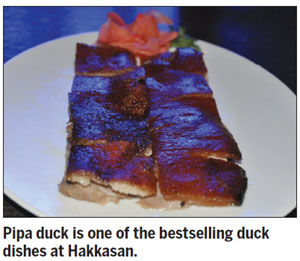
"Hakkasan is a high-end brand and we welcome their concept into the market to encourage people to view Chinese food as quality and luxury," says Lisa Tse, a British Chinese restaurateur based in Manchester, England. She believes food is an art, regardless of where it originated.
"After all, Chinese food was the food of the emperors in China and there are so many techniques in Chinese cooking that are not fully appreciated," Tse says. "Any operator who can help raise the mantel of Chinese food is good news indeed."
Beyond high-end
Different from other restaurants that are focused on Chinese cuisine, Hakkasan aims to provide consumers a high-end, luxury experience beyond just dining. In June, Hakkasan Group acquired The h.wood Group, a Los-Angeles-based nightlife and event production company. The deal - that positions Hakkasan Group as the majority stakeholder in all of The h.wood Group's entities - strengthened Hakkasan's position in the nightlife and events industry in the US, and will accelerate the growth of both companies by providing guests with a diverse portfolio of offerings.
"With the acquisition now complete, we look forward to providing capital resources to The h.wood Group as they pursue significant growth both in LA and beyond," said Nick McCabe, president of Hakkasan Group.
In April, in a similar move, Hakkasan Group formed -- MGM Hakkasan Hospitality - a joint venture hotel management company with US-listed MGM Resorts International. The new company will focus on the design, development and management of luxury non-gaming hotels, resorts and residential properties in key international gateway cities and prime resort destinations across the globe.
All the hotel and resort projects under development by each group will contribute to the joint venture, including MGM projects in the Americas, the Middle East, and Asia; and Hakkasan projects in Abu Dhabi and Dubai.
Khadem Al Qubaisi, chairman of Hakkasan Group, said it was a "crucial" for Hakkasan to find the right partner to do this, and he said the two companies are a good match in developing new branded projects.
"This joint venture exemplifies one of our stated strategies of developing Hakkasan Group into a multifaceted global lifestyle company," said Al Qubaisi.
Oscar Yuan, vice-president of brand strategy consultancy Millward Brown Optimor in New York, says there is always an opportunity to change consumer perceptions about a brand or a product, especially in categories as rich and subjective as cuisine.
Upscaling food
"The food category, specifically, has a trend in taking what has traditionally been seen as something simple and convenient and transforming it into a pleasure to be enjoyed, taking upscaling to a whole new level," says Yuan.
Similar to what Hakkasan tries to achieve, different kinds of cuisines are trying to make a high-end version of themselves to give people a different experience. Examples range from gourmet hamburger outlets, with toppings such as truffles, artisan cheeses, and organic vegetables to Kobe-quality beef, to gourmet pizzas in upscale settings.
"On a more mass scale, we have seen chains like Chipotle attack the Mexican food market from an angle of health and sustainability," says Yuan.
One factor marking the food high-end, obviously, is the price.
Hakkasan's prices range from an appetizer at $10 to an entre with a three-digit price tag - a platter of Japanese abalone and black truffles for $888 (whether or not to match a lucky number of Chinese, which means fortune).
One of the flagship dishes - Peking duck garnished with Beluga caviar - is $345, and Ho says the unique ingredients used for the dish are worth the money.
"This kind of caviar is rare and precious," says Ho, referring to the Russian Beluga caviar, which is primarily found in the Caspian Sea, the world's largest sea-salt lake.
"For some 30 grams, it's about $300, and it can't be found in the US," he notes.
"Adding some Beluga caviar to the crispy duck skin makes it really delicious," Ho says of one of their menu innovations in making the duck dish.
"We pick the fresh, healthy ingredients for our dishes for the prices we charge," says Ho. "We never use can food, for example."
To some, Chinese restaurant brands' trying to achieve the high-end market is not new.
Cedric Yeh, a curator at the Washington-based National Museum of American History at the Smithsonian Institution, shares his concern, wondering how exactly these restaurant brands can make a difference by marketing food with an expensive price.
"It's taking advantage of a stereotype," says Yeh, the curator for an upcoming exhibit on the 160 years of history of Chinese food in the US.
"When you go to these fancy restaurants, it takes it out of the normal - how many can actually go to these restaurants?" Yeh asks. "You can't influence anything when you are so expensive."
The market Hakkasan is seeking does exist when most Chinatown restaurants lack high-end, sophisticated services, says William Kirby, a professor with Harvard Business School and a historian of modern China.
"Consistency, quality and imagination" are things Kirby says are important for building these brands. "It's just not an easy thing to do but it's possible to do and do it at the highest possible standard," he says.
Yuan, the branding strategist, says the broad cultural and regional specificities of Chinese cuisine actually create opportunities to target high-end markets, which increasingly value provenance and storytelling around the products.
"It gives the brand many angles from which to provide a high-end experience, from discussing the different types of peppers used in Szechuan cuisine to how the bamboo steamers create different flavors in dim sum," says Yuan, who tried Hakkasan's London chain.
Yuan thinks a Chinese company is "uniquely suited to craft and share these messages".
"The challenge is that there is a strong tradition of brand building from large Western companies, who have the resources and know-how to really build a high-end food brand," he says.
Tse, of Sweet Mandarin, thinks the challenge that Hakkasan, like any restaurant may face, is finding a team who will "embrace their ethos and carry it through across the restaurants".
"The opportunities are to tap into a market that typically hasn't embraced Chinese food as a first choice for luxury dining," she says.
Issues around quality perceptions for Chinese companies that have been widely covered in the press could affect their brand building, says Yuan. "Chinese brands will have to manage these perceptions carefully".
Hakkasan's Ho believes in quality and consistency, which he says is key to make a brand sustainable.
"I think being self-critical helps," says Ho. "I consistently think about how to improve our menu, how to innovate and create new things; that's what matters."
Overseas locations
In the New York chain alone, there are about 50 chefs in full operation, most of whom are Chinese, at the lunch and dinner hours. Ho, as executive chef, helps the company develop overseas locations. That's about a dozen now worldwide including London, Miami, Los Angeles, Abu Dhabi, Mumbai, Dubai and New York.
After more than 10 chains opened outside of China, the Chinese restaurant brand launched its first chain in Shanghai in March.
"It is a huge differentiator and draw for Chinese consumers to see foreign brands entering China - it provides a level of exclusivity and quality that appeal to the rapidly emerging middle class," says Yuan of Millward Brown.
Starting overseas is a valuable asset to bring to the Chinese market, particularly when it comes to food, Yuan explains. "Chinese consumers are curious and open to trying different cuisines, particularly when it's a foreign take on the cuisine they know so well."
Ho splits his time between London and the rest of Hakkasan chains. "I will spend more time in the US in the coming months," he says, referring to the five outposts in the US out of Hakkasan's current 12 all over the world.
On occasions when Ho could sit down and eat at any of them, chefs there would get him to sample new dishes.
"I don't quite like the so-called fusion style," says Ho of the emerging trend in Hong Kong in recent years.
Tiny details in cooking make a difference, he says. "Wood or coal stove for simmering soups would taste differently."
New ideas
Ho says he enjoys the freedom his boss gives, which allows him to show new ideas and creativity to make the menu better - the reason why he has stayed with the company for so long.
"That helps me accomplish my goal - it gives me the opportunity to create something special and better quality," he says.
Hakkasan also focuses on localizing its menus based on different locations, with 40 percent of locally created dishes based on the original menu.
"We would create menus to tailor the local demands and with what ingredients we can find locally to make something different on the menu," he says.
It's probably Ho's ability to adapt to new places, passion for cooking and his open mind to share his recipes that have led him to where he is today.

"Only when you teach everything to others, you will reach where you need to innovate and create new things, that's how I look at it," says Ho. "Innovation and fear often don't exist at the same time."
Before launching a Hakkasan in a new place - either a country or city - Ho would explore the city and experience its cultural nuances.
"It's important to learn about the culture, traditions, and even the history of a place, and that could reflect on the creation of our menu," says Ho.
When he is not cooking, he reads.
"I read a lot - mostly Chinese classics and history books," says Ho as he talks about a plot in the Dream of the Red Chamber, one of China's four classical novels, set in the18th century. He recalls details of several of some 400-plus characters in the story, remembering each one's personality.
It's always tricky to ask a chef to pick his favorite in his own menu. But Ho answers it in a smart way: "I enjoy my mother's family BBQ the most," he says. "I would give her three Michelin stars."
Contact the writer at yuweizhang@chinadailyusa.com
|
The Hakkasan LasVegas restaurant and nightclub at MGM Grand opened last year. Provided to China Daily |
(China Daily USA 08/08/2014 page20)
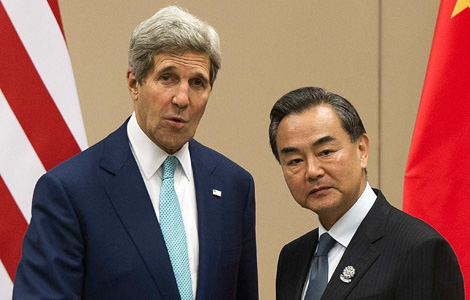
 Chinese FM meets US state secretary in Myanmar
Chinese FM meets US state secretary in Myanmar
 New-type frigate Quanzhou joins Chinese navy
New-type frigate Quanzhou joins Chinese navy
 Disinfection conducted in quake-hit Ludian
Disinfection conducted in quake-hit Ludian
 Let the game begin!
Let the game begin!
 Lily Qi: Leading like a true American
Lily Qi: Leading like a true American
 Navy crews from China, US compete in matches
Navy crews from China, US compete in matches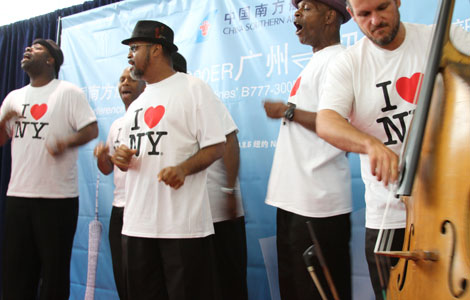
 Will Chinese tourists 'heart' New York too?
Will Chinese tourists 'heart' New York too?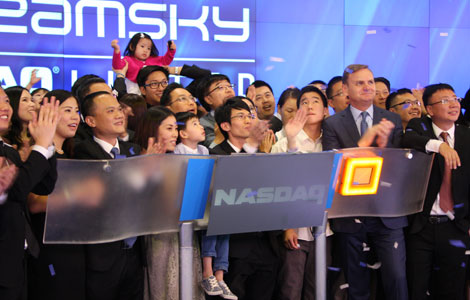
 Mobile gamer iDream Sky raises $115m in IPO
Mobile gamer iDream Sky raises $115m in IPO
Most Viewed
Editor's Picks

|

|

|

|

|

|
Today's Top News
Chinese Ebola doctors leave for Africa
At least 39 killed in Tehran jet crash
US is top destination for Chinese fugitives
Beijing 'open' to US airstrikes in Iraq
Foreigners jailed for obtaining data
BMW to reduce prices amid probe
New thriller breaks stereotype
US airstrikes Iraqi Sunni extremist targets
US Weekly

|

|
